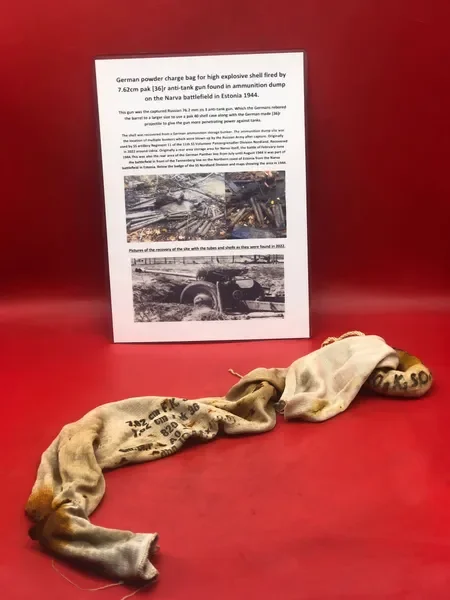 Image 1 of 10
Image 1 of 10

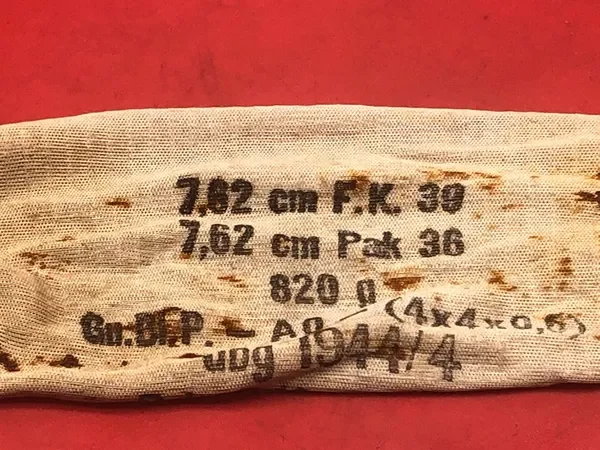 Image 2 of 10
Image 2 of 10

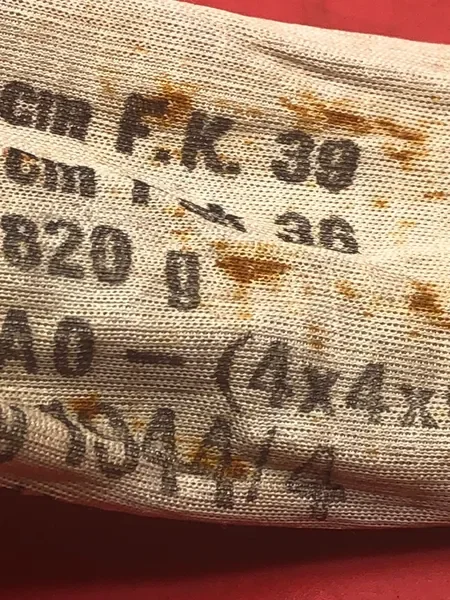 Image 3 of 10
Image 3 of 10

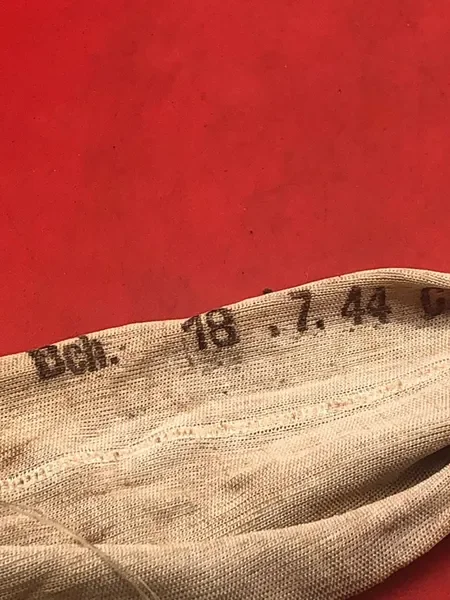 Image 4 of 10
Image 4 of 10

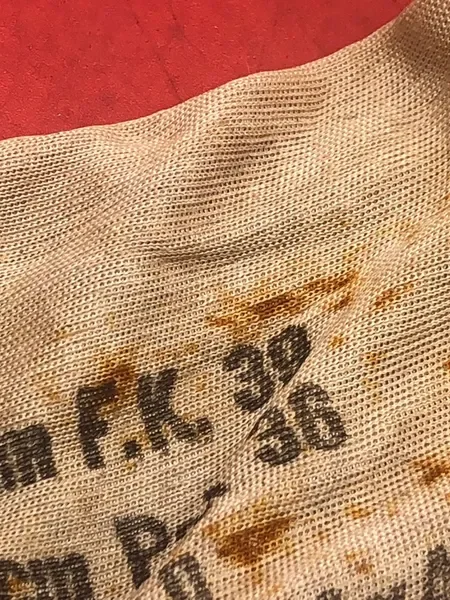 Image 5 of 10
Image 5 of 10

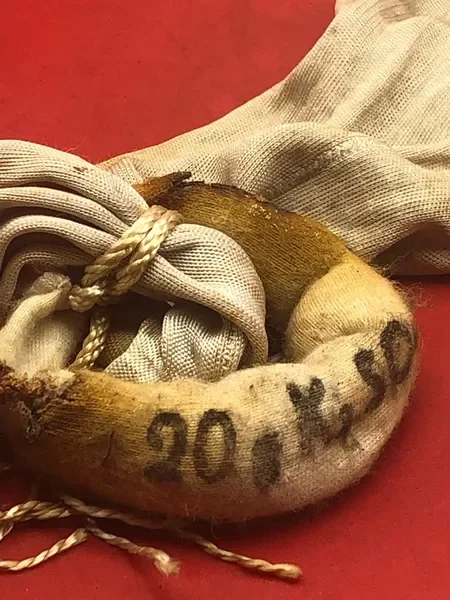 Image 6 of 10
Image 6 of 10

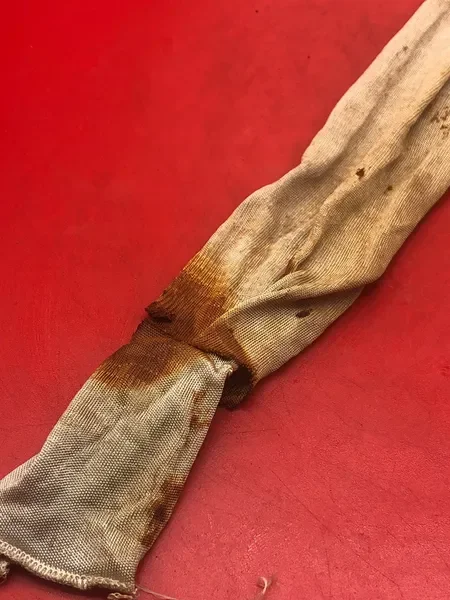 Image 7 of 10
Image 7 of 10

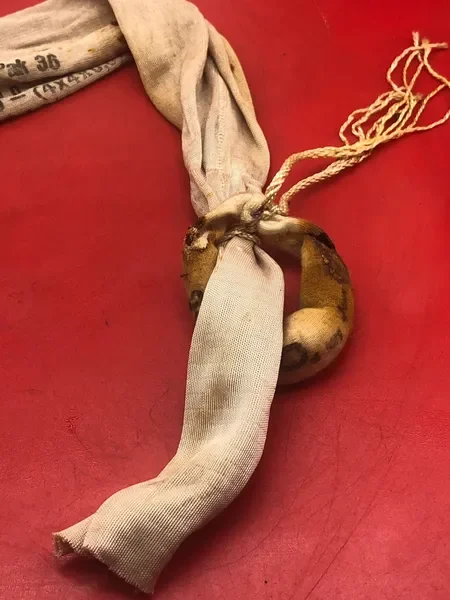 Image 8 of 10
Image 8 of 10

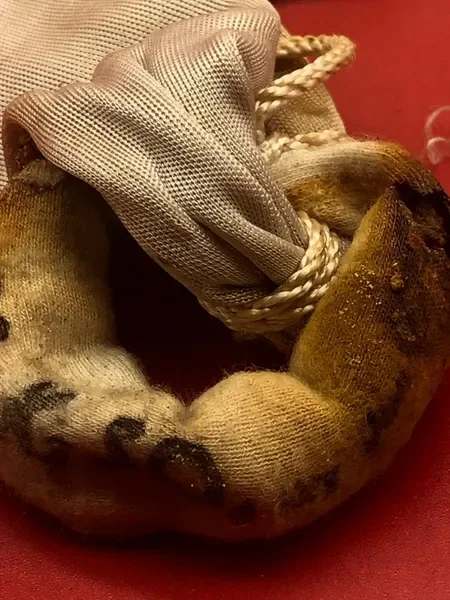 Image 9 of 10
Image 9 of 10

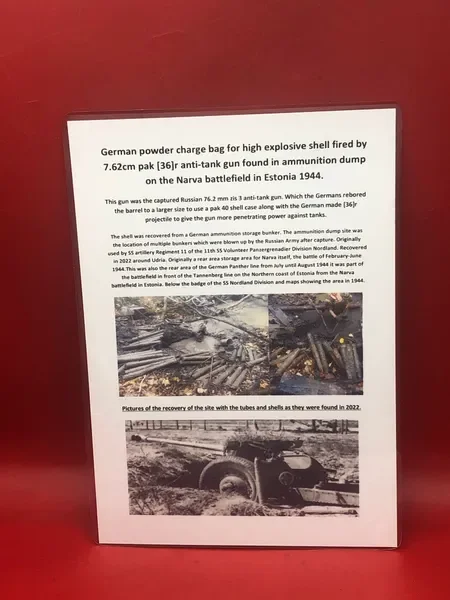 Image 10 of 10
Image 10 of 10











German powder charge bags for 76.2mm pak [36]r anti tank gun shell, recovered from a German ammunition storage bunker in Narva 1944 battlefield.
This is part of a group of items recovered in 2022 from an old German ammunition bunker site, which was later blown up by the Russians after its capture. Many of the items show battle damage due to this event.
Included here is a pair of German powder charge bags, comprising the main top bag and the smaller bottom bag still connected. The top bag retains all its maker markings, dated 1944, with a clear packing date of 18th July 1944. The bags are slightly stained and damaged from being buried in the shell, but they remain solid, not breaking up or falling apart. They have been lightly cleaned and are perfect for display or any collection. Such a complete survival of charge bags from the battlefield is exceptionally rare and makes this an outstanding addition for collectors.
The powder charge bags were recovered from a German ammunition storage bunker. The included A5 laminated information cards show diagrams of how these bunkers were constructed, along with photographs of the recovery process from the bunker complex earlier this year. The ammunition dump site around Udria contained multiple bunkers, which were destroyed by the Russian Army after capture. These bunkers were originally used by SS Artillery Regiment 11 of the 11th SS Volunteer Panzergrenadier Division Nordland, serving as rear-area storage during the Battle of Narva from February-June 1944 and later as part of the German Panther Line from July-August 1944, in front of the Tannenberg Line on the northern coast of Estonia.
Also referenced is the German 7.62?cm Pak [36]r anti-tank gun, which was a captured Russian 76.2?mm ZIS-3 gun rebored by the Germans to fire Pak 40 shells with a German-made [36]r projectile, increasing its penetration power against tanks.
The Battle of Narva took place from 2nd February 1944 to 10th August 1944. The Soviet Union, under Joseph Stalin, sought control of the Narva area in Estonia for an air base and a route into Prussia. However, the German Army countered swiftly, resulting in 480,000 Soviet casualties compared to 68,000 German. German forces involved included the III SS (Germanic) Panzer Corps, XXVI Army Corps, XXXXIII Army Corps (Eastern sector, coastal defence), with units such as the 103rd SS Heavy Panzer Battalion, SS Nordland Division, the 20th Waffen Grenadier Division of the SS (1st Estonian), and the 4th SS Volunteer Panzergrenadier Brigade (Netherlands).
This is part of a group of items recovered in 2022 from an old German ammunition bunker site, which was later blown up by the Russians after its capture. Many of the items show battle damage due to this event.
Included here is a pair of German powder charge bags, comprising the main top bag and the smaller bottom bag still connected. The top bag retains all its maker markings, dated 1944, with a clear packing date of 18th July 1944. The bags are slightly stained and damaged from being buried in the shell, but they remain solid, not breaking up or falling apart. They have been lightly cleaned and are perfect for display or any collection. Such a complete survival of charge bags from the battlefield is exceptionally rare and makes this an outstanding addition for collectors.
The powder charge bags were recovered from a German ammunition storage bunker. The included A5 laminated information cards show diagrams of how these bunkers were constructed, along with photographs of the recovery process from the bunker complex earlier this year. The ammunition dump site around Udria contained multiple bunkers, which were destroyed by the Russian Army after capture. These bunkers were originally used by SS Artillery Regiment 11 of the 11th SS Volunteer Panzergrenadier Division Nordland, serving as rear-area storage during the Battle of Narva from February-June 1944 and later as part of the German Panther Line from July-August 1944, in front of the Tannenberg Line on the northern coast of Estonia.
Also referenced is the German 7.62?cm Pak [36]r anti-tank gun, which was a captured Russian 76.2?mm ZIS-3 gun rebored by the Germans to fire Pak 40 shells with a German-made [36]r projectile, increasing its penetration power against tanks.
The Battle of Narva took place from 2nd February 1944 to 10th August 1944. The Soviet Union, under Joseph Stalin, sought control of the Narva area in Estonia for an air base and a route into Prussia. However, the German Army countered swiftly, resulting in 480,000 Soviet casualties compared to 68,000 German. German forces involved included the III SS (Germanic) Panzer Corps, XXVI Army Corps, XXXXIII Army Corps (Eastern sector, coastal defence), with units such as the 103rd SS Heavy Panzer Battalion, SS Nordland Division, the 20th Waffen Grenadier Division of the SS (1st Estonian), and the 4th SS Volunteer Panzergrenadier Brigade (Netherlands).
